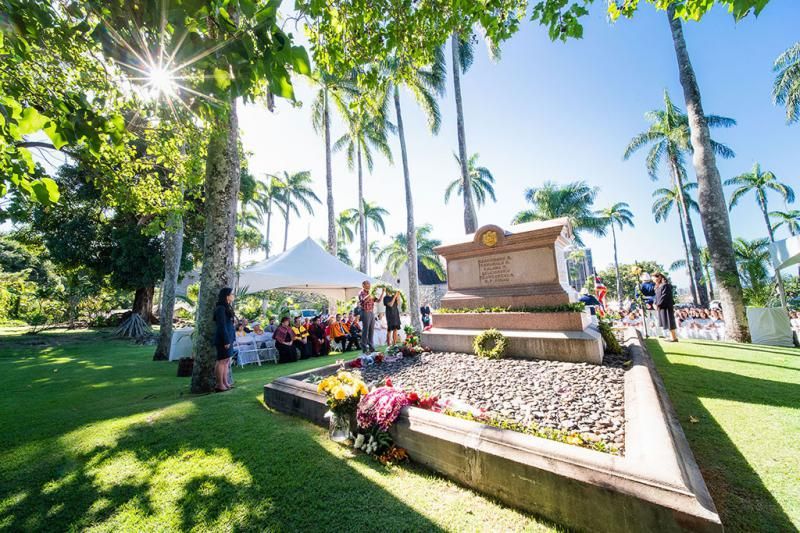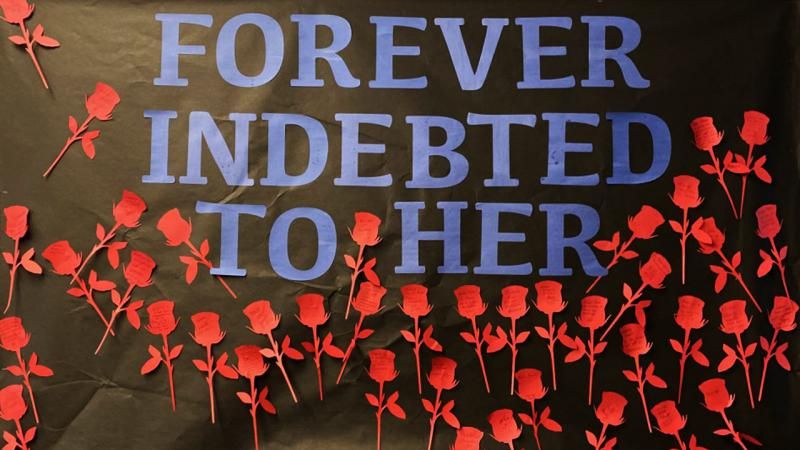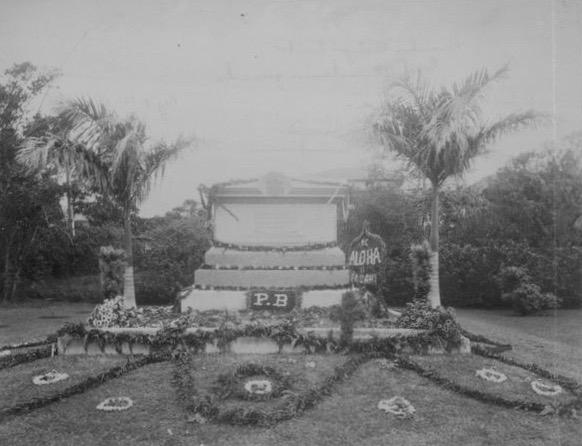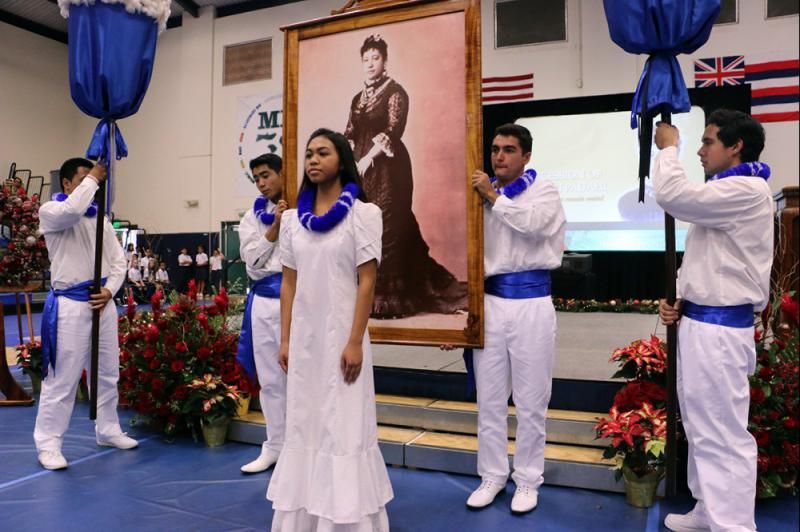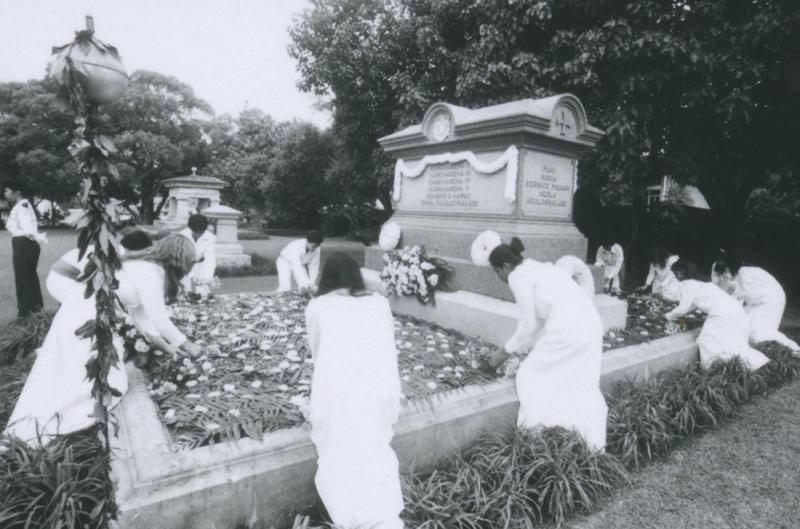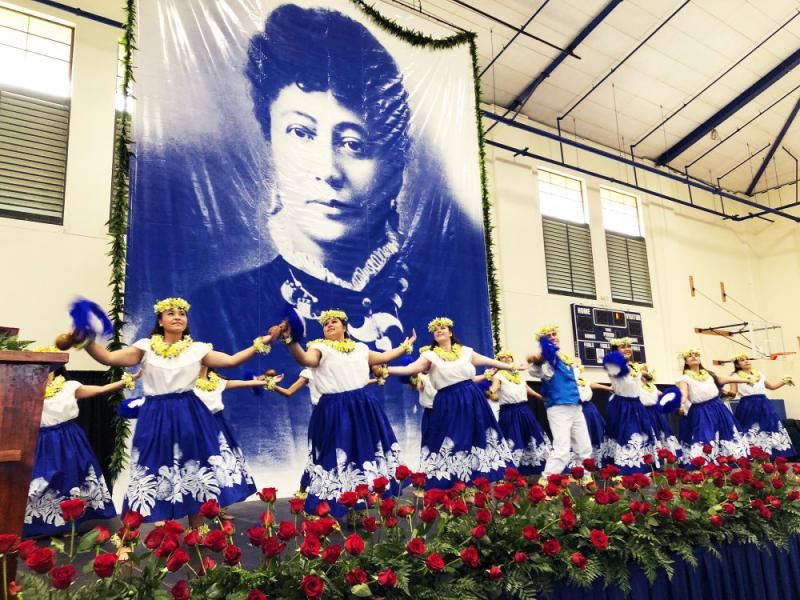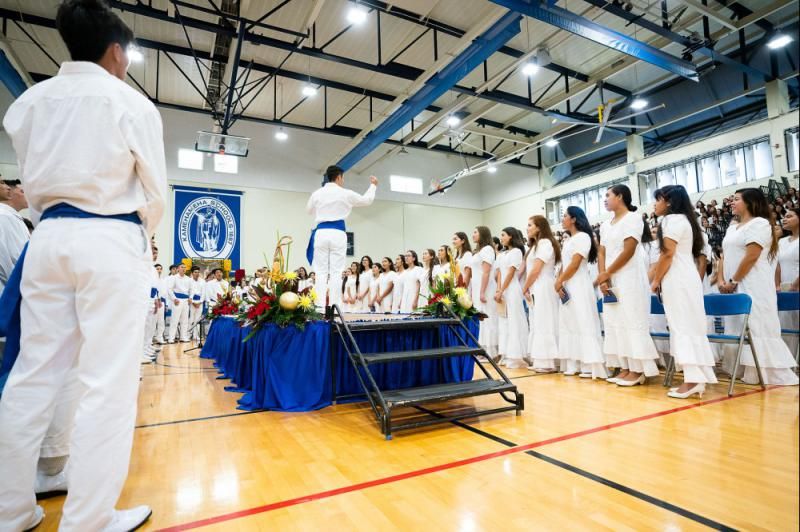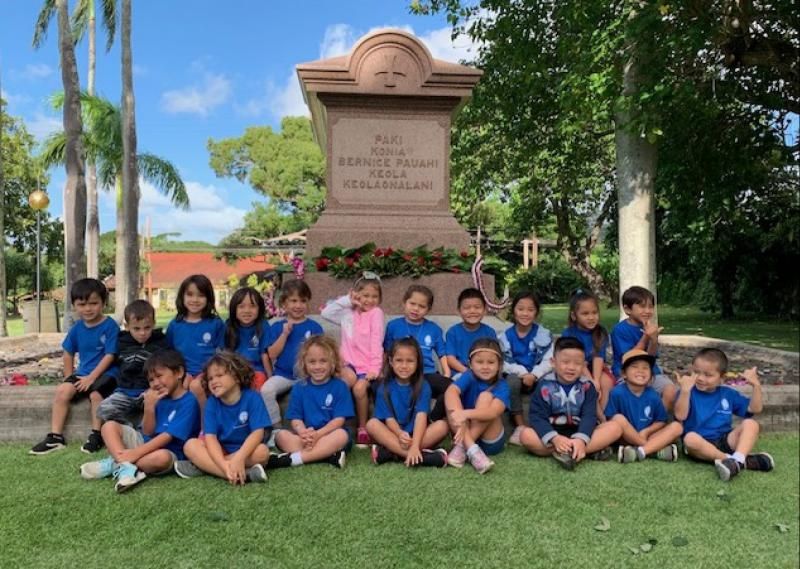Digital Collections
Celebrating the breadth and depth of Hawaiian knowledge. Amplifying Pacific voices of resiliency and hope. Recording the wisdom of past and present to help shape our future.
Nanea Armstrong-Wassel [Ho‘okahua]
The tradition of Founder’s Day at the Kamehameha Schools began in 1888, one year after the opening of the original School for Boys. On December 19, students and staff gathered to celebrate Ke Aliʻi Bernice Pauahi Bishop with formal oratories and the singing of hymns. Five years later, in 1893, another honorific ceremony was added at Maunaʻala in Nuʻuanu, adorning the final resting place of our benefactress in song and lei. These traditions remain to this day and have since extended pae ʻāina wide to include all who are touched by Pauahi’s legacy.
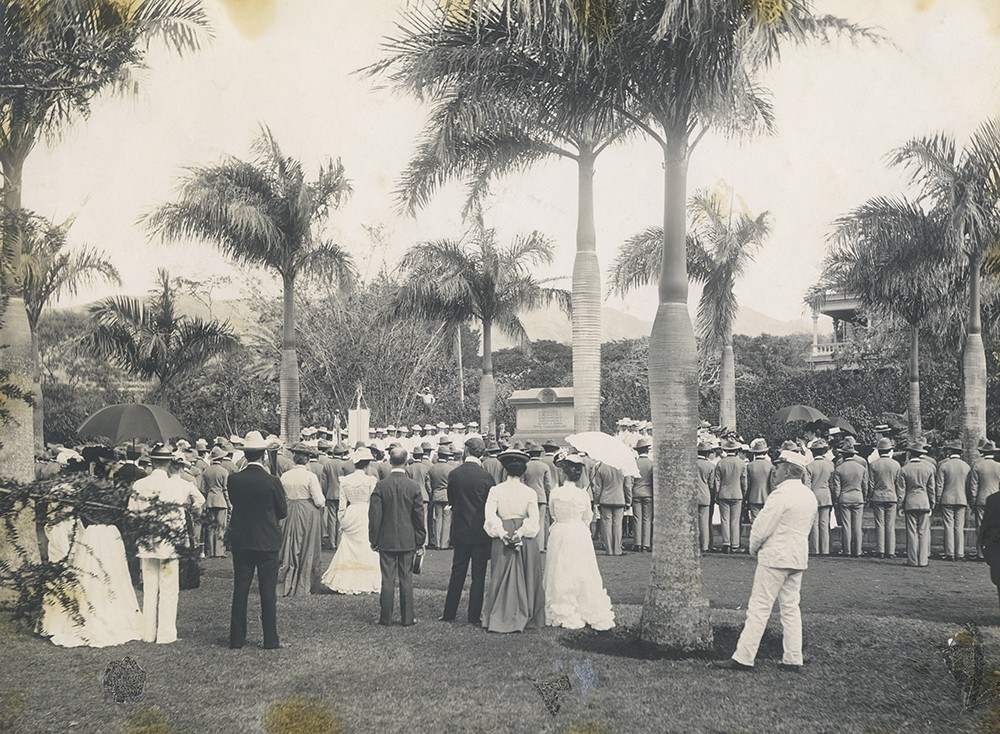
Born on December 19, 1831 to High Chief Abner Pākī and High Chiefess Laura Konia, Bernice Pauahi was adopted at birth by Elizabeth Kīnaʻu (royal regent and daughter of Kamehameha I) and her husband, Mataio Kekūanāoʻa. At that same time, then six-year-old Ruth Keʻelikōlani, biological daughter of Kekūanāoʻa, returned to her father’s home to be raised alongside the baby Pauahi. Keʻelikōlani’s mother, Kalani Pauahi, and Bernice Pauahi’s mother, Ke Aliʻi Konia, were both daughters of Kamehameha I’s eldest son, Pauli Kaʻōleiokū, making them half-sisters. The two would from the time of infancy remain as loyal and close as sisters are to be. Their life-long aloha for one another would eventually inspire the vision that led to the founding of Kamehameha Schools, forever honoring their shared legacy.
Growing up in a household that served as a primary hub of political power, Pauahi was surrounded with examples of what it meant to be a benevolent and responsible Hawaiian aliʻi. She was fully aware of her responsibility to her people and committed herself to doing everything in her power to uplift them, even beyond her physical life.
Princess Pauahi bequeathed nearly her entire estate to establish and maintain the Kamehameha Schools. Today, her estate has become one of the world’s most flourishing charitable trusts. One might wonder what Ke Aliʻi Pauahi’s motivation was for creating such an endowment for the Hawaiian people. What kind of foresight had she acquired through her life experiences that compelled her to leave her vast lands and wealth to create a school for Hawaiian boys and girls?
Author George Kanahele succinctly describes Pauahi’s world at the time she penned her will. Kanahele writes:
It is necessary to keep in mind the general despair of the Hawaiian people when she was writing her will, for if any people needed help in 1883-1884, it was nā kānaka Hawaiʻi. First of all, Hawaiians faced the threat of physical extinction. In 1831 when Pauahi was born, there had been 124,500 Hawaiians, and now there were 40,000 left.
Economically, they had lost or sold their lands, had been driven out of the traditional occupations, and had been forced to compete on uneven terms.
Socially, the family system had broken down, drunkenness, crime, juvenile delinquency multiplied with absentee fathers, divorce, and orphans. It is no wonder that psychologically many Hawaiians were now cripples having lost much of their sense of identity and self-esteem.
Culturally, the once strong fabric of religious beliefs and symbols, of music and the hula, of crafts and games – all came unraveled. By 1883 even the language was slowly dying being replaced by English.
Kanahele’s astute assessment of the world that Pauahi and her contemporary Hawaiians lived in offers many explanations as to why she wanted to create a puʻuhonua of sorts. She recognized the immediate need for a safe, nurturing space that would ready her people for a world that she understood would only become increasingly more competitive.
Pauahi was a visionary. In the midst of all the causes for despair that plagued her people in the nineteenth century, she knew that future Hawaiians, by working hard and having the proper tools and guidance, would be able to retain their proud heritage. She believed in giving successive generations a means to becoming people who exhibited the same kind of honor and courage as did her great grandfather, Kamehameha I.
Charles Reed Bishop spoke of the expectations of those who would partake in his wife’s generosity during the first Founder’s Day Address delivered on December 19, 1888. Bishop stated,
Could the founder of these schools have looked into the future and realized the scenes here before us this day, I am sure it would have excited new hopes in her breast, as it does my own. If the Hawaiians while continuingly friendly and just toward those of all nationalities, are true to themselves, and take advantage of the opportunities which they have been instructed, and is which these youth now present are here being taught day by day both in precept and in example, there is no reason why they should not from this time forth, increase in numbers, self-reliance, and influence. We look to those who may be trained in the Kamehameha Schools to honor the memory of the founder and the name of the schools by their good conduct, not only in school, but in their mature lives as well.
Ke Aliʻi Pauahi’s gift to her people was much more than just a school. The opportunity to learn and become educated offers one the autonomy to choose how he or she may best contribute as a good and industrious citizen of the world. Just as the Princess led an exemplary life of service to others, it was her desire that through the support provided by Kamehameha Schools, those who were willing to work hard would not only enjoy fulfilling lives but also follow her example by helping those less fortunate. Pauahi envisioned a people who would be able to travel different paths, arrive at different destinations, but still be successful, productive human beings that contribute to the well-being of others and society.
Mary Krout, in her book entitled The Memoirs of Honorable Bernice Pauahi Bishop, wrote, “the dominating idea of Mrs. Bishop’s life was the enlightenment and elevation of the Hawaiian race.” For all of the opportunities offered by Ke Aliʻi Pauahi, an understanding of what was given must be perpetuated and reciprocated by her beneficiaries in order to truly honor our aliʻi wahine and the values she stood for. Kamehameha Schools not only has a responsibility to provide for the well-being of the Hawaiian people, but also to be responsible stewards of the land that sustains us and good neighbors to all that share in calling Hawaiʻi home.

